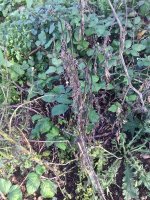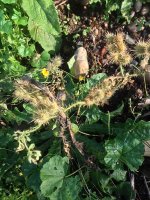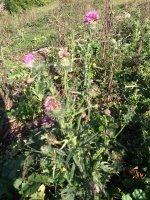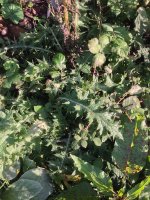forgeblast
Elite Member
I am enrolled in CREP, we have a bit over 2 acres in it. All of my trees are above the tree tubes (5' tubes) now and the golden rod and other bushy thick plants have come in thick. I am also in year 3 or 4 of 15, so I can no longer mow. I spot spray and that is it. In a few years the canopy will be thick enough to keep some of the weeds from germinating but right now I still walk it spring and fall with a back pack sprayer. My main foes are honeysuckle, multi-flora rose, thistle, and different vines that want to go all out like mile a min. Many times like when I am working on wrecking large established bushes of honey suckle or Japanese knot weed I will week wack in the spring, let them shoot up and hit them with roundup etc..



